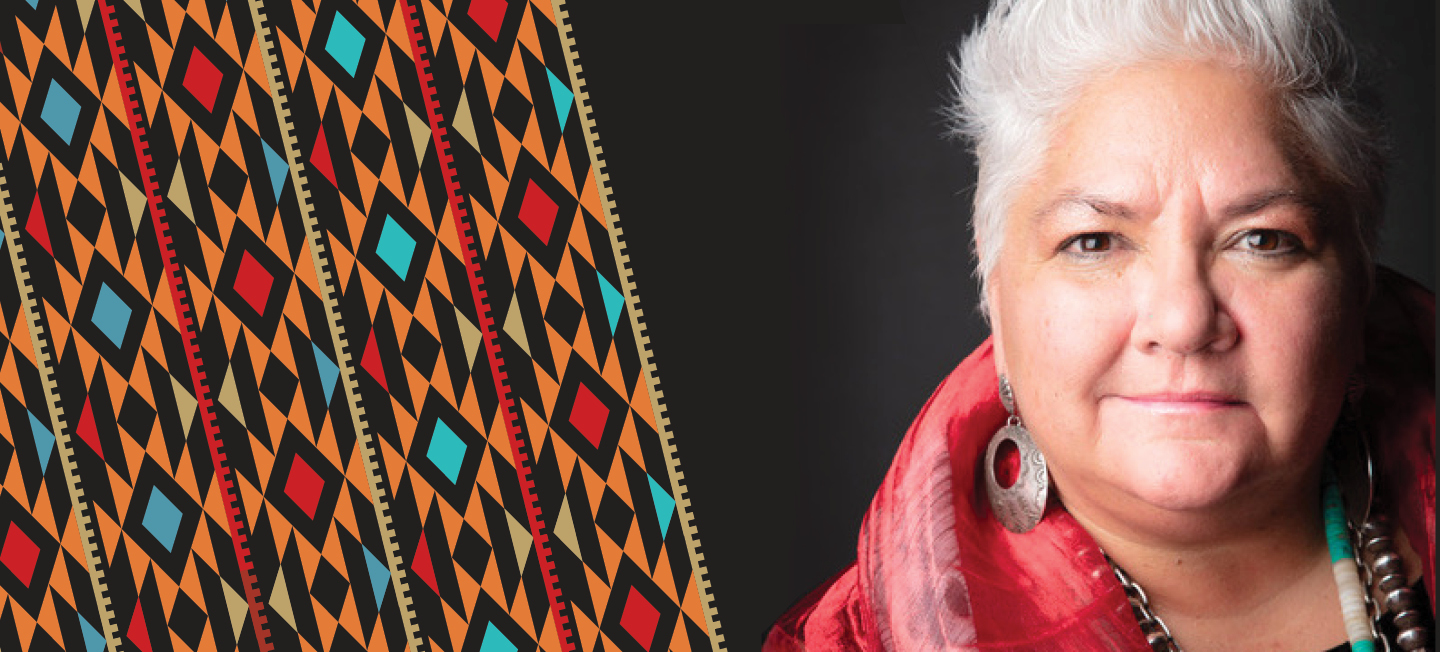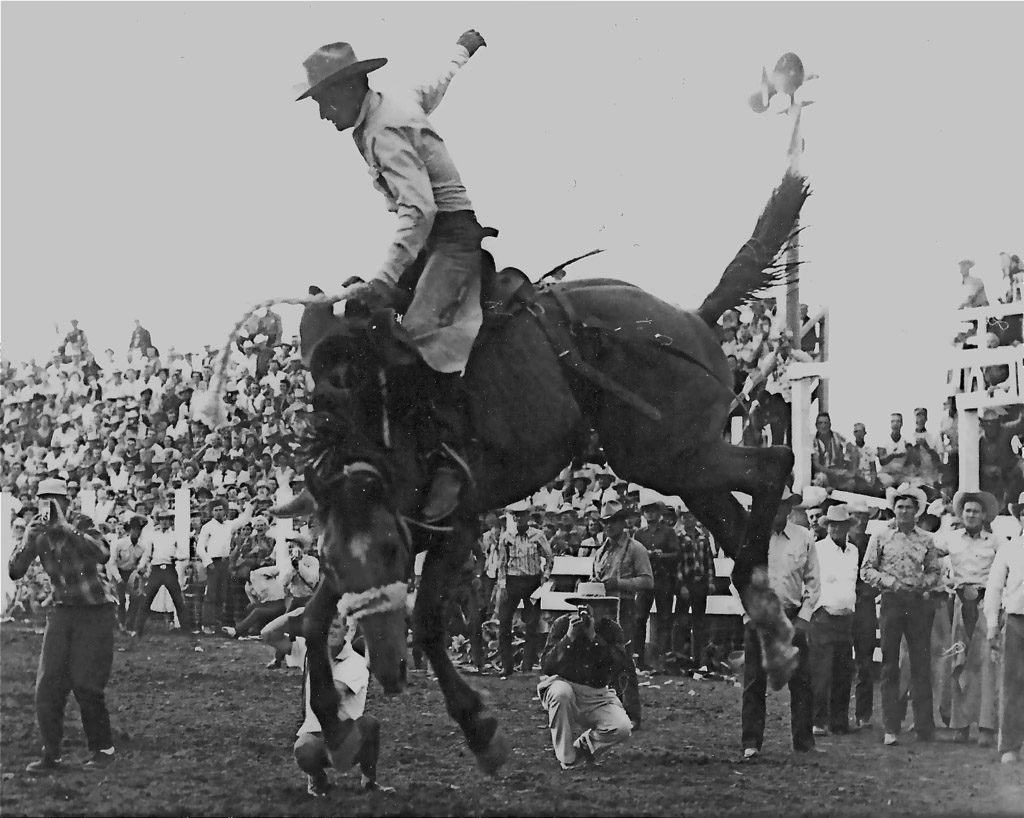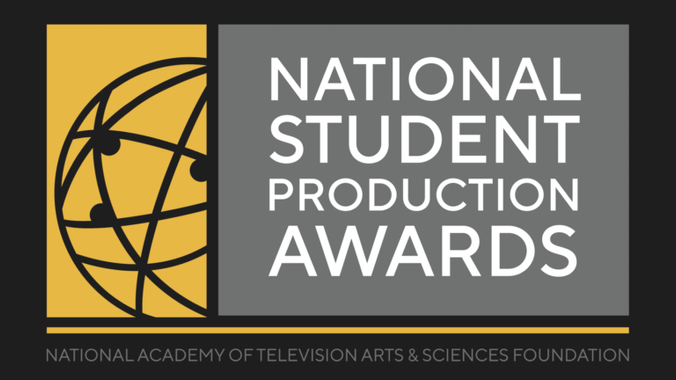Protecting Tribal Lands
JoAnn Chase, a citizen of the Mandan, Hidatsa and Arikara Nation, was taught to revere the Earth—now she’s working with tribal leaders to protect human health and the environment across their lands as director of the federal American Indian Environmental Office.

Photo illustration by Monica Chu.
Within the Navajo Nation, on 27,000 square miles sprawling across Utah, New Mexico and Arizona, toxic waste from more than 500 abandoned uranium mines leaks dangerous radiation into water and homes. This legacy of the Cold War’s nuclear arms race endangers the more than 250,000 people who live there, potentially causing kidney failure and lung and bone cancer.
In remote villages in Alaska, climate change threatens the health and livelihoods of tribal people who subsist off the land and water. With melting Arctic permafrost, tundra lakes that many tribes depend on for water are disappearing and sewer and water systems are endangered. Erosion has sped up and tribal food cellars as well as wetlands and other wildlife habitats have been damaged.
Wildfires and drought are ravaging tribal lands in California, throughout the Southwest and up into the Pacific Northwest. From coast to coast, tribes are navigating the impacts of climate change and pollution on habitats and ecosystems they depend on to survive—much of it land that they have cultivated since being forced onto it many decades ago by the federal government.
Event: March 31, 2022 at 5:30 p.m.
Indigenous Perspectives on Sustainability and the arts
JoAnn Chase and Ty Furman, managing director of the BU Arts Initiative, will talk about Indigenous perspectives on sustainability and the arts at the Howard Thurman Center for Common Ground. The event is part of BU’s Indigenous Voices in the Americas series and is sponsored by the BU Arts Initiative, BU Sustainability and the Howard Thurman Center for Common Ground. The event is free and open to the public; register here.
It is JoAnn Chase’s job to support tribal people across the country as they navigate these health and environmental threats, many of them a legacy of the very government she works for.
Her job title is long—senior advisor and director, American Indian Environmental Office in the U.S. Environmental Protection Agency’s Office of International and Tribal Affairs—but what it comes down to is this: Chase (’85) builds bridges with leaders from 574 federally recognized tribes—many with a deep mistrust of a federal government that forcibly removed them from ancestral land they revere as their mother—and breaks down silos on their behalf within the vast bureaucracy of the federal government. Chase, who was appointed by President Joe Biden after holding the same job during former President Barack Obama’s administration, advocates for the sovereignty of tribal nations, which have their own governments and a deep knowledge of the land, and works with them in building environmental programs.
The Boundary Walker
Chase is one of a very few Native people in leadership roles within the EPA. A citizen of the Mandan, Hidatsa and Arikara Nation—and the daughter of hall of fame saddleback bronc rider Joe Chase—she was born and raised on the Fort Berthold Reservation in North Dakota. The former executive director of the National Congress of American Indians, the oldest and largest American Indian and Alaska Native advocacy organization, she has spent her entire career working for Indigenous rights, in the U.S., and globally.
“This is exactly what I’ve been prepared for,” Chase says. “For Native people, it’s all integrated—the air, the earth and my experience on it, how I am nurtured, how I nurture you—and fundamental to that is the health and wellbeing of She who sustains us: the Earth. It’s a bigger picture of injustice for me, too. The forces of oppression have naturally impacted the Earth and have often had disparate impact on the people in these spaces.”
She ticks off contemporary examples: the uranium mines in Navajo nation; petroleum plant-dotted “cancer alley,” in Louisiana; the huge Superfund site, on tribal land in Oklahoma, that was mined for lead to make bullets during World War I and World War II. “There are, sadly, endless examples of this,” she says. “But for me, it all comes back to caring for the Earth.”
Gail Small, who is a citizen of the Northern Cheyenne Tribe in Montana, and an attorney, has worked with Chase on tribal rights and environmental issues over many years. Under the Obama administration, Chase elevated tribal sovereignty, says Small. It is thanks to Chase’s efforts, Small adds, that she and an Alaskan tribal leader, Sarah James, hold seats on the Commission for Environmental Cooperation (CEC), an international organization established by the United States, Canada and Mexico under the 1994 North American Agreement on Environmental Cooperation (NAAEC)—giving them a voice in decisions that impact tribal lands across North America.
“JoAnn is a boundary walker,” says Small. “Boundary walkers carve out common ground within diverse populations. JoAnn is traversing boundaries among all the Indian nations, as well as with the general white audience, and with the federal, state, and often the international governments we work with. She’s at the table doing her very best to assert sovereignty for Indian tribes and get our voices heard. It’s a difficult job. Not many people would want to do it.”
It’s Chase’s job to educate people in Washington who have been taught little about tribal people and their rights. “She has to explain to every stakeholder why Indian tribes are at the table, why they should be at the table—that they’re here as federally recognized governments,” Small says. Tribal governments are sovereign governments—nations within a nation. “It’s Indian Tribes 101. We all do it every day.”
“It’s part of my job, but honestly it’s part of my life,” says Chase. “Our history isn’t taught in the school system. I feel a personal responsibility to educate people.” And for Chase, storytelling is at the core of the work.
Telling Her People’s Story
Chase says she finds it gratifying to bring EPA officials to tribal lands and have them meet with tribal people. “We can debate policy papers and we can read books and we can look at great pictures,” she says, “but there’s nothing like visiting a tribal nation, being embraced by them and understanding some of the amazing work that they’re doing.”
She recalls a trip she made with a group of Obama-era EPA officials to the tiny Alaskan village of Kivalina, on the Bering Sea. “They were exposed to the challenges of the Alaska Native tribes, where a gallon of milk is 11 bucks,” Chase says. “Nobody had ever thought about that. We saw the permafrost thawing, the magnitude of the environmental impact of the mines.”
For Native people, it’s all integrated—the air, the earth and my experience on it, how I am nurtured, how I nurture you—and fundamental to that is the health and wellbeing of She who sustains us: the Earth. It’s a bigger picture of injustice for me, too. The forces of oppression have naturally impacted the Earth and have often had disparate impact on the people in these spaces.
JoAnn Chase
Chase takes it upon herself to connect the cultural dots. On the trip to Kivalina, that meant insisting her colleagues from Washington stick around for the lunch the tribal leaders had prepared for them, even though they were running late for a meeting with a group of mining executives.
“I said, ‘We’re going to honor these folks who spent scarce resources to host us and we’re going to engage with the community,’” Chase says.
She advised the EPA officials that it was polite to at least taste the dishes they weren’t familiar with—whale and seal meat, and whale blubber with berries. “There was a transformative moment for some of my colleagues when an elderly man stood up and said, ‘I’ve never flushed a toilet in my entire life, but I want my children to flush a toilet, on tribal land.’ And then he wept,” Chase says. “We’d walked around and seen the problems with solid waste disposal, but this gentleman provided the context.”
A Personal History
The history of devastation endured by her own tribal nation includes the 1953 flooding of their entire reservation by the Army Corps of Engineers. The massive Garrison Dam they built would, officials promised, provide hydroelectric power, flood control, recreation and irrigation for non-Native farmers further down the Missouri River.
More than 90 percent of the tribe was relocated from the rich bottomland they’d cultivated over many years and moved to the top of a plateau, says Small, who has talked with tribal members about the dam. “It was windy and cold and the ground was gumbo; you couldn’t grow anything there. They [federal officials] didn’t allow them time to remove the graves of their loved ones. There were bodies floating in the water. This was inflicted on JoAnn’s family, in her dad’s generation.”

Chase’s father and her grandmother lived in Elbowoods, which had been the center of reservation life before the flooding. They were both relocated to the plateau, Chase says. She also speaks of relatives who were forcibly shipped off to boarding schools, part of a federal policy to assimilate tribal people into white culture. “It’s hard to talk about,” says Chase. “There’s so much pain there.”
“You have to reach in and find the joy,” she says. She returns regularly to the reservation for powwows, to visit with her mother and other family members and to honor her father and her grandmother and the others who are gone. “We say we have seven generations of shoulders we stand on,” she says. “We also have a responsibility to the next seven generations. If I couldn’t find the joy, I wouldn’t be honoring my past and fulfilling my obligation to the future.”
As a champion saddle bronc rodeo rider who won acclaim in the white cowboy world, Chase’s father was also a boundary walker, says Small. Chase’s mother, who is white and grew up in Connecticut, arrived at the reservation to teach school through the Vista program, and stayed.
“The only phone was at the school,” says Chase. “My Dad went to the school to use the phone to book his rodeo jobs. That’s how they met. They fell in love.”
From Film School to Capitol Hill
Chase came to COM to study film so she could become a documentary filmmaker. “Growing up, there were Hollywood films with these terrible stereotypes of the stoic Indian chief and the woman walking behind him,” Chase says. “I thought we should be telling our own stories.”
A summer internship in Washington, D.C., in the office of Congressman Byron Dorgan (D-N.D.), sparked her interest in policy and she went on to work as a staff member for U.S. Representative Barbara Boxer (D-Calif.) after graduation. Though she still planned to pursue a career as a documentary filmmaker, she made a detour to the University of New Mexico Law School, after deciding a law degree would be helpful in any work she might do with Indigenous people.
When it came time to deliver a talk on feminist jurisprudence, Chase wanted to bring the topic to life for her classmates. So she invited her friend Joy Harjo, who would later become the first Native American U.S. Poet Laureate, to kick off the event. “She gave a beautiful poetry reading,” Chase says. “Somehow I thought this powerful poetry of joy would help set the stage and show that it wasn’t just a case, in black and white letters, in a casebook.” Storytelling can move people and make a complicated issue accessible to a diverse audience, says Chase, in ways a speech or a policy paper may not.
We’re attempting to overcome 500 years of profound injustice. From the tribal perspective, we will continuously fall short.
JoAnn Chase
It’s a strategy that Chase continues to use, often melding her passion for the arts—poetry, theater, dance, music and especially the works of Indigenous artists—with her work. She considers Buffy Sainte-Marie, the Indigenous Canadian-American singer, Oscar-winning composer, visual artist, teacher and activist, one of her most important role models, as well as a friend.
After graduating from law school, Chase returned to Washington as an attorney with the U.S. Justice Department. It was a short-lived stint; she decided law wasn’t for her. In 1994, she began her nine-year tenure as executive director of the National Congress of American Indians—“One of the most politically charged jobs there is,” says Small.
She went on to become a Next Generation Leadership fellow at the Rockefeller Foundation and did consulting work for nonprofits on issues related to Indigenous people. In 2010, a year into the Obama administration, she was recruited for the job she currently holds.
Under a new assistant administrator, Michelle DePass, the American Indian Environmental Office, which had been sidelined within the Office of Water, was elevated to the Office of International and Tribal Affairs. That put tribal nations at the same level within the EPA as foreign nations.
“JoAnn made it clear this isn’t community building—these are nations,” says DePass, the past president of the Meyer Memorial Trust, a foundation that works on social justice issues. “I wanted to hire her to prove we were serious. JoAnn knows how to work within the system and she knows how to change the system.”
For Chase, however, getting through the application process—the job started out as an executive service position, though it was eventually converted to a political appointment—posed some challenges.
Chase doesn’t say “I did this” or “I achieved that.” She talks about “we” and “us” and “my team.” It’s part of her culture.
One of Chase’s “aunties” and mentors, Lydia Sage-Chase, who was inducted into the North Dakota Heritage Center and State Museum’s Native American Hall of Fame for her leadership in 2021, once explained that culture to a researcher: “One of our virtues is not to brag or boast on ourselves,” she said. ”Let someone else brag about you.”
That mindset wasn’t going to help Chase land the job at the EPA, however. In her first try at the personal essays required for the application, she sang the praises of her team at the National Congress of American Indians.
“I felt pretty good about what I wrote,” Chase says. She shared it with the people who were coaching her through the process. “They said, ‘Oh, no, this won’t do.’” For her next draft, Chase was advised to make copious use of the pronoun “I,” and focus on what she’d done.
“It was devastating,” she says. “There was no ‘us.’ It was completely counter to a values-based community system. I thought, ‘How am I going to do this?’”

To get into the mindset to rewrite the essay herself, she invented an alter ego—a self-promoting upper middle class white man named Herman Smith. “It was so disingenuous. It really does take a village.”
If “Herman Smith” helped her find the right voice, it was JoAnn Chase who signed the application, and while she would have preferred not to take credit herself, the achievements she listed were all real. She got the job—and immediately ditched her alter ego. “I had to get in the door,” she says. “JoAnn Chase carried out the job.”
Even in Washington, nearly 2,000 miles from her childhood home in North Dakota, Chase tries to stay connected to the Mandan, Hidatsa and Arikara Nation. Speaking on Zoom, she holds up her right arm, revealing a small tattoo, a contemporary rendering of a bear claw, above her wrist. “I don’t want to romanticize the bear, but my father’s Indian name translates to bear necklace,” she says. “His brother’s name translates to bear rising.” The tattoo reminds her of her tribal connection, she says.
Chase tells the story behind the tattoo. Early in her career in Washington, Chase was asked to testify during a hearing on environmental impacts on tribal homelands convened by the Senate Committee on Indian Affairs. She fielded questions from a Republican Senator who was widely viewed by tribal members as hostile to Indigenous rights.
The idea for the bear claw tattoo, as a form of psychic protection, and reminder of who she was, came to her after the hearing. “I called my dad and asked for permission,” she says. “He said I should talk to one of the tribal elders. His name was Fred. We called him together. Fred said, ‘This came to you for a reason. It’s your protection, it’s your connection.’”
She got the tattoo.
Full Circle
When President Donald Trump was elected, Chase moved to Manhattan, where she’d long dreamed of living. She went back to consulting for nonprofits and immersed herself in the arts. A couple years ago, Chase, musical icon Nona Hendryx, and social justice innovator Makani Themba, started a nonprofit, SisterSMATR, to help young women of color pursue careers in science, math, technology and the arts.
Then Chase was tapped by the Biden administration to take up her old job. For her second tour in the EPA, she knew what to expect. “The federal bureaucracy can give you migraines,” she says. “It’s a challenging place to be. We’ll never move the needle as far as the tribes would like us to. We’re attempting to overcome 500 years of profound injustice. From the tribal perspective, we will continuously fall short. I know and understand that.” She says she pumps herself up for the work by listening to native drumming songs from the Mandaree Singers on her headphones.
With the pandemic lifting, Chase says she’s looking forward to getting the EPA Administrator, Michael Regan, out to visit tribal lands.
Chase has taken a long detour from film school, but when her time in Washington is done she hopes to return to her original dream: She’d like to produce a documentary film about her parents and the life they created within the Mandan, Hidatsa and Arikara Nation in North Dakota.


